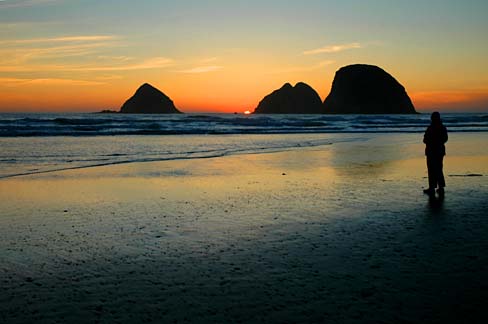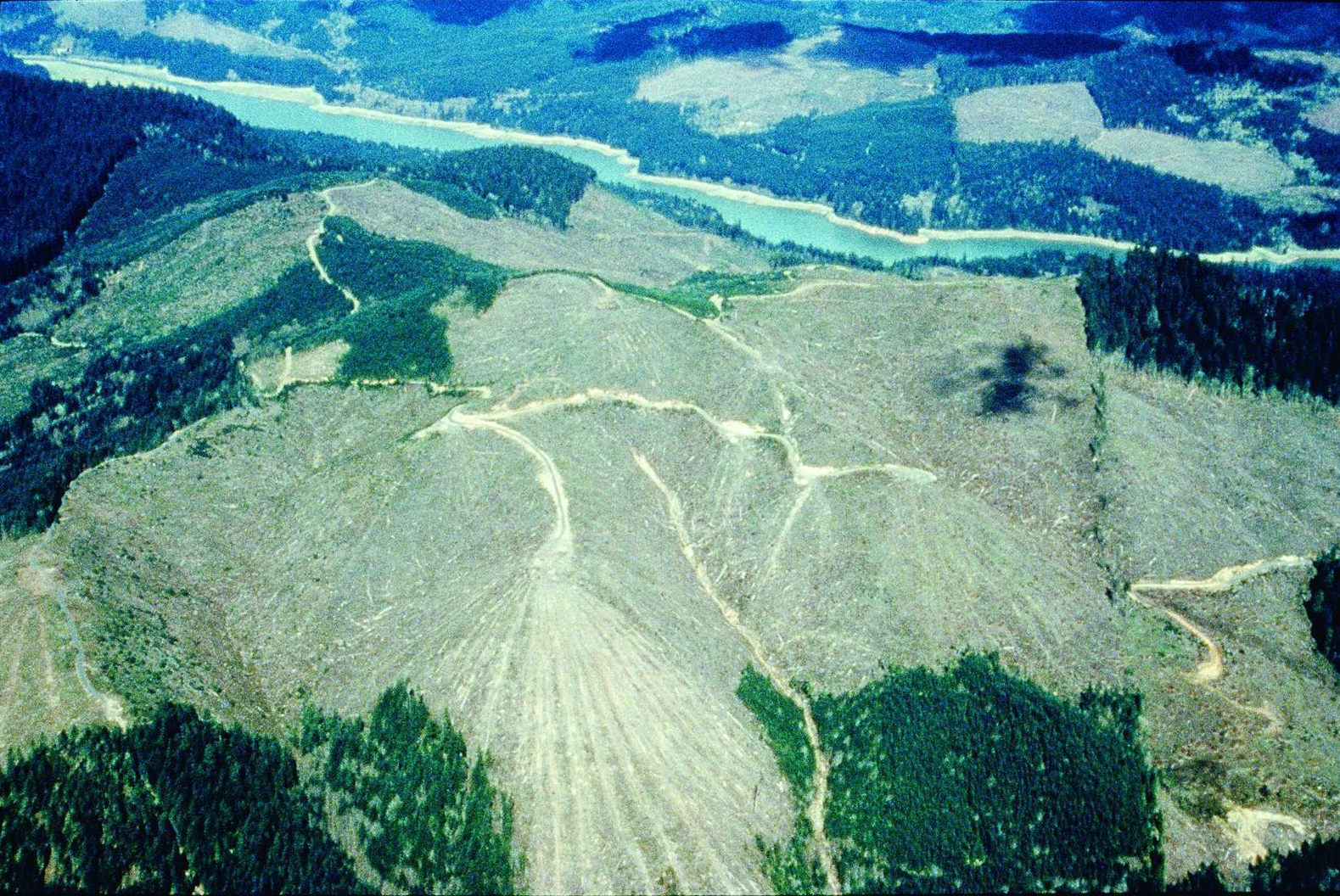In play right now in Congress are two bills that would elevate the conservation status of 442,620 acres of public land in Oregon.
Read MoreWilderness
Wither the Wild Rogue?

When Representative Greg Walden (R-2nd-OR) hears “the Rogue,” he happily dreams of the roar of chainsaws. But now Walden is down and Representative Peter DeFazio (D-4th-OR) is up, and the stars have aligned to save the Wild Rogue. You can help.
Read MoreFilling the Congressional Conservation Pipeline for When It Unclogs

Several mostly good public lands conservation bills have been introduced in the 115th Congress (2017–18) but languish in committee, unable to get a vote on the floor of the House or the Senate.
Read MoreThe National Wilderness Preservation System, Part 3: The Promise of and a Promise to Wilderness

Despite its imperfections, the Wilderness Act is a wonderful law, worth defending against all attacks and attackers.
Read MoreThe National Wilderness Preservation System, Part 2: Past Progress Stalled

There are many reasons the National Wilderness Preservation System is not expanding on the scale of times past. Here are six major ones.
Read MoreThe National Wilderness Preservation System, Part 1: Birthed by Congress in Language Both Poetical and Practical

The passage of the Wilderness Act on September 3, 1964, is an extraordinary landmark in the history of American conservation and law.
Read MoreWolves of the Minam Pack. Source: Oregon Department of Fish and Wildlife
The Public’s Wolves on Public Lands
The Oregon Department of Fish and Wildlife (ODFW) recently issued its annual report on Oregon wolves. It contains great, good, bad, ugly and troubling news.
Read MoreSelling More Heroin to Pay for Methadone: Oil Drilling in the Arctic National Wildlife Refuge: Part 2

As part of the tax bill recently signed into law by President Trump, at the behest Senator Lisa Murkowski (R-AK), Congress opened up Arctic National Wildlife Refuge for oil drilling. The next battle over drilling the in the refuge is about to commence. For the caribou and nature, each battle must be won or at least a draw. For the forces of darkness, they must only win once.
Read MoreOregon’s Wildlands Should Matter At Least as Much to Oregon Legislators as Alaska's and Utah's

However, their cosponsoring a tundra wilderness bill in Alaska and a red rocks wilderness bill in Utah—at relatively large acreages of 1.6 and 9.1 million acres respectively—contrasts unfavorably with the Oregon congressional delegation’s efforts to conserve and restore Oregon’s green forests, tan deserts, and blue waters for the benefit of this and future generations.
Read MoreThe Proposed Oregon Wildlands Act of 2017: Very Good but Not Yet Great

The congressional conservation pipeline is clogged. This is not because it is too full of fine legislation that would elevate the conservation status of certain public lands by designating wilderness, wild and scenic rivers, and other special protection areas, but because of the general dysfunction of Congress. (I hear it was worse before the Civil War.) One bill in that pipeline, sponsored by Senator Ron Wyden (D-OR) and cosponsored by Senator Jeff Merkley (D-OR), is the proposed Oregon Wildlands Act (OWA) of 2017 (S.1548, 115th Congress).
Read MoreNow That’s a Member of Congress!

With some tweaks, the proposed Northern California Conservation and Recreation Act can be a great bill that when enacted into law will be a gift of enduring benefit to this and future generations of North Coast Californians, all Californians, and all Americans.
Read MoreThe Great Sand Dunes Wilderness in the Great Sand Dunes National Park and Preserve, Colorado One can borrow this tricked-out wheelchair from the National Park Service. Source: National Park Service via www.wilderness.net
Wilderness and Mountain Bikes: Can They Co-Exist?
Trigger warning for wilderness purists: I’m going to argue that mountain bikes in wilderness areas are not a unqualified evil and in fact—if wilderness advocates are visionary, strategic, pragmatic and relevant—can be a qualified opportunity.
Read MoreThe Westerman Bill: The Timber Industry’s Wet Dream

Who wouldn’t want “resilient” (“able to withstand or recover quickly from difficult conditions”) forests? With the name Resilient Federal Forests Act of 2017 (H.R.2936, 115th Congress), what could possibly be wrong with this bill?
Everything. Judge neither a book by its cover nor a bill by its name.
Introduced by Representative Bruce Westerman (R-4th-AR), the bill is the timber industry’s wet dream legislation. In only his second term in Congress, Westerman has received more campaign contributions from Big Timber than any other industry.
The Westerman bill would legislate horrifically harmful public forest policy into law.
Read MorePreremembering Jim Weaver, Oregon Conservationist

As Jim Weaver quietly lives out his days in his beloved Oregon, this and future generations are in his debt because even though he represented the congressional district ranked highest for timber production in the nation, Weaver was a strong and tireless proponent of wilderness. There are wilderness areas today safely on the map, both inside and beyond his congressional district, because Jim Weaver stood up for the wild in Oregon in ways that no elected official had done before or has done since.
Read MoreIncreased Wilderness Demand Calls for Increased Wilderness Supply
The demand for wilderness and parks is most likely to increase despite any best efforts to limit Oregon's, so what about the supply of wilderness?
Read MoreFederal Systems for the Conservation and Enjoyment of Lands and Waters

Federal conservation systems are an unqualified social good and generally provide elevated protection and better management to important federal public lands and to resources and areas of high national significance. All existing federal conservation systems could be improved, and none should be weakened or discarded. Those that haven’t yet been codified by Congress need to be.
Read More“Friends at home! I charge you to spare, preserve and cherish some portion of your primitive forests; for when these are cut away I apprehend they will not be easily replaced.”
Wilderness: Expanding Concept, Shrinking Supply
Compared to its four adjacent neighbors, Oregon has the smallest percentage of its lands designated as units of the National Wilderness Preservation System. While the average of the areas of the five states protected as wilderness is more than 9 percent, in Oregon less than 4 percent of the land is so protected. Oregon has 47 wilderness areas totaling 2,457,473 acres. Additional potential wilderness areas (a.k.a. roadless areas) in Oregon total more than 12 million acres, with approximately 61 percent of that area being generally tree-free (in the Oregon High Desert and other desert areas considered part of the sagebrush steppe, aka Sagebrush Sea) and the remainder generally forested. Congress should expeditiously expand the National Wilderness System in Oregon.
Read MoreThe National Wildlife Refuge System, Part 2: Historical Evolution and Current Challenges
Our beloved National Wildlife Refuge System arose with little systematic thought. From President Theodore Roosevelt’s proclamations of the first “national bird reservations,” many areas have been established under a multitude of names (wildlife refuges, wildlife ranges, game ranges, wildlife management areas, waterfowl production areas, and more). What they all have in common is that their primary purpose is the conservation of native animals.
Read MoreWhy Wilderness?
Why wilderness? Why the hell not wilderness?! As Edward Abbey proclaimed in The Journey Home, “The idea of wilderness needs no defense. It only needs more defenders.” Unfortunately, the default setting of our Western society is that nature does not have value unless we can dig it up, cut it down, graze it off, plow it under, drain it dry, make it wet, or haul it away. Even wilderness defenders need information and arguments with which to persuade an increasingly online—and out of touch—public about the importance of and threats to wilderness.
Read MorePrivatizing Federal Public Lands in Western Oregon

In its recently revised resource management plans for western Oregon, the Bureau of Land Management has identified 290 parcels of federal public lands, ranging in size from 0.01 to 440.2 acres and totaling 18,458.95 acres, as suitable for disposal. Although disposing of 0.7 percent of the approximately 2,600,000 acres of western Oregon BLM public lands may not seem like a big deal, many of these parcels have high public values.
Read More

